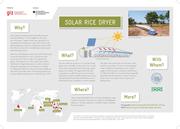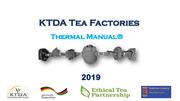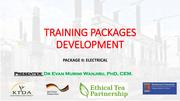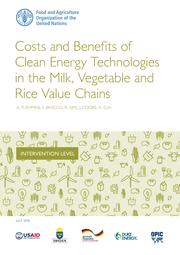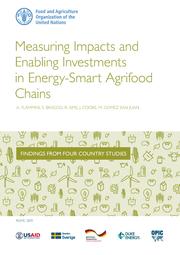Knowledge fuels change
For over a decade, Energypedia has shared free, reliable energy expertise with the world.
We’re now facing a serious funding gap.
Help keep this platform alive — your donation, big or small, truly matters!
Thank you for your support
Difference between revisions of "Climate-Smart Agrifood Systems: Publications"
From energypedia
***** (***** | *****) |
***** (***** | *****) |
||
| Line 12: | Line 12: | ||
*[http://www.fao.org/assets/infographics/FAO-Infographic-water-thirsty-en.pdf FAO. The World is Thirsty ...]<br/> | *[http://www.fao.org/assets/infographics/FAO-Infographic-water-thirsty-en.pdf FAO. The World is Thirsty ...]<br/> | ||
| − | *[[ | + | *[[Strategy 2019-23 - Concept document.pdf|IGRAC (2019). Groundwater in a Changing World.]]<br/> |
*[http://www.fao.org/3/a-i4591e.pdf FAO. Irrigation Management.]<br/> | *[http://www.fao.org/3/a-i4591e.pdf FAO. Irrigation Management.]<br/> | ||
*<span style="text-align: left; color: rgb(48, 48, 48); text-transform: none; text-indent: 0px; letter-spacing: normal; font-family: arial,helvetica,clean,sans-serif; font-size: 13px; font-style: normal; font-variant: normal; font-weight: 400; text-decoration: none; word-spacing: 0px; float: none; display: inline !important; white-space: normal; orphans: 2; background-color: transparent; -webkit-text-stroke-width: 0px;"></span>[https://www.ncbi.nlm.nih.gov/pmc/articles/PMC2935123/ Strzepek, K., & Boehlert, B. (2010). Competition for water for the food system. Philosophical transactions of the Royal Society of London. Series B, Biological sciences, 365(1554).]<br/> | *<span style="text-align: left; color: rgb(48, 48, 48); text-transform: none; text-indent: 0px; letter-spacing: normal; font-family: arial,helvetica,clean,sans-serif; font-size: 13px; font-style: normal; font-variant: normal; font-weight: 400; text-decoration: none; word-spacing: 0px; float: none; display: inline !important; white-space: normal; orphans: 2; background-color: transparent; -webkit-text-stroke-width: 0px;"></span>[https://www.ncbi.nlm.nih.gov/pmc/articles/PMC2935123/ Strzepek, K., & Boehlert, B. (2010). Competition for water for the food system. Philosophical transactions of the Royal Society of London. Series B, Biological sciences, 365(1554).]<br/> | ||
| Line 59: | Line 59: | ||
*[https://energypedia.info/images/1/12/Case_Study_Kenya_-_Holgajo_Farm.pdf Country Case Study Holgojo Farm (Kenya).]<br/> | *[https://energypedia.info/images/1/12/Case_Study_Kenya_-_Holgajo_Farm.pdf Country Case Study Holgojo Farm (Kenya).]<br/> | ||
*[https://energypedia.info/images/b/b9/Case_Study_Morocco-_Alaoui.pdf Country Case Study Alaoui (Morocco).]<br/> | *[https://energypedia.info/images/b/b9/Case_Study_Morocco-_Alaoui.pdf Country Case Study Alaoui (Morocco).]<br/> | ||
| − | *[[ | + | *[[Solar Pumping for Irrigation: Improving Livelihoods and Sustainability|IRENA (2016). Solar Pumping for Irrigation: Improving Livelihoods and Sustainability.]]<br/> |
| − | *[[ | + | *[[E Benefits and Risks of Solar-powered Irrigation - A Global Overview|FAO and GIZ (2018). The Benefits and Risks of Solar-Powered Irrigation: An Overview.]]<br/> |
*[https://energypedia.info/images/8/88/Pompage_Solaire.pdf GIZ (2019). Investigation de l’impact des installations de pompage solaire sur la consommation d’eau et la situation socio- économique d’un agriculteur dans 3 zones pilotes au Maroc.]<br/> | *[https://energypedia.info/images/8/88/Pompage_Solaire.pdf GIZ (2019). Investigation de l’impact des installations de pompage solaire sur la consommation d’eau et la situation socio- économique d’un agriculteur dans 3 zones pilotes au Maroc.]<br/> | ||
*[https://www.pseau.org/outils/ouvrages/practica_foundation_unicef_le_pompage_solaire_applique_aux_adductions_d_eau_potable_en_milieu_rural_manuel_de_formation_2018.pdf UNICEF (2019). Le Pompage Solaire. Appliqué aux Adductions d’Eau Potable en milieu rural. Manuel de Formation.]<br/> | *[https://www.pseau.org/outils/ouvrages/practica_foundation_unicef_le_pompage_solaire_applique_aux_adductions_d_eau_potable_en_milieu_rural_manuel_de_formation_2018.pdf UNICEF (2019). Le Pompage Solaire. Appliqué aux Adductions d’Eau Potable en milieu rural. Manuel de Formation.]<br/> | ||
| Line 69: | Line 69: | ||
*Costs and Benefits of Clean-Energy-Technologies in the Milk Value Chain:<br/> | *Costs and Benefits of Clean-Energy-Technologies in the Milk Value Chain:<br/> | ||
| − | **[https://poweringag.org/docs/costs-benefits-clean-technologies-tanzania-s-milk-value-chain https://poweringag.org/docs/costs-benefits-clean-technologies-tanzania-s-milk-value-chain] <br/> | + | **[https://poweringag.org/docs/costs-benefits-clean-technologies-tanzania-s-milk-value-chain https://poweringag.org/docs/costs-benefits-clean-technologies-tanzania-s-milk-value-chain]<br/> |
| − | **[https://poweringag.org/docs/costs-benefits-clean-technologies-kenya-s-milk-value-chain https://poweringag.org/docs/costs-benefits-clean-technologies-kenya-s-milk-value-chain] <br/> | + | **[https://poweringag.org/docs/costs-benefits-clean-technologies-kenya-s-milk-value-chain https://poweringag.org/docs/costs-benefits-clean-technologies-kenya-s-milk-value-chain]<br/> |
**[https://poweringag.org/docs/costs-benefits-clean-technologies-tunisia-s-milk-value-chain https://poweringag.org/docs/costs-benefits-clean-technologies-tunisia-s-milk-value-chain]<br/> | **[https://poweringag.org/docs/costs-benefits-clean-technologies-tunisia-s-milk-value-chain https://poweringag.org/docs/costs-benefits-clean-technologies-tunisia-s-milk-value-chain]<br/> | ||
| Line 77: | Line 77: | ||
=== Solar Drying<br/> === | === Solar Drying<br/> === | ||
| − | *[[File: | + | *[[File:Techsheet A3 solar rice dryer V3.0.pdf|180px|Solar Rice Dryer|alt=Solar Rice Dryer]]<br/> |
*[http://www.produse.org/imglib/downloads/energy_sources/PRODUSE-Factsheet-Peru.pdf Coffee Processing with Solar Dryers in Peru]<br/> | *[http://www.produse.org/imglib/downloads/energy_sources/PRODUSE-Factsheet-Peru.pdf Coffee Processing with Solar Dryers in Peru]<br/> | ||
*[http://www.produse.org/imglib/downloads/energy_sources/PRODUSE-Factsheet-Bolivia.pdf Drying Peaches with Solar Dryers in Bolivia]<br/> | *[http://www.produse.org/imglib/downloads/energy_sources/PRODUSE-Factsheet-Bolivia.pdf Drying Peaches with Solar Dryers in Bolivia]<br/> | ||
| Line 85: | Line 85: | ||
=== Other Solar Powered Applications<br/> === | === Other Solar Powered Applications<br/> === | ||
| − | *[[Solar- | + | *[[Solar-Powered Oil Press for Sesame Seed|Solar Powered Oil Press for Sesame Seed]]<br/> |
*[https://energypedia.info/images/3/32/Case_Study_Kenya-_Ongata_Rongai.pdf Country Case Study Ongata-Rongai: Hydroponics]<br/> | *[https://energypedia.info/images/3/32/Case_Study_Kenya-_Ongata_Rongai.pdf Country Case Study Ongata-Rongai: Hydroponics]<br/> | ||
| Line 93: | Line 93: | ||
*[https://openknowledge.worldbank.org/bitstream/handle/10986/32122/Have-Improved-Cookstoves-Benefitted-Rural-Kenyans-Findings-from-the-EnDev-Initiative.pdf?sequence=1&isAllowed=y World Bank Group (2019). Have Improved Cookstoves Benefitted Rural Kenyans?]<br/> | *[https://openknowledge.worldbank.org/bitstream/handle/10986/32122/Have-Improved-Cookstoves-Benefitted-Rural-Kenyans-Findings-from-the-EnDev-Initiative.pdf?sequence=1&isAllowed=y World Bank Group (2019). Have Improved Cookstoves Benefitted Rural Kenyans?]<br/> | ||
| − | *[[ | + | *[[Bioenergy for Agricultural Production|Bioenergy for Agricultural Production.]]<br/> |
<br/> | <br/> | ||
| Line 99: | Line 99: | ||
== Wind and Hydro Power<br/> == | == Wind and Hydro Power<br/> == | ||
| − | *[[File: | + | *[[File:Hydro scout guide ET may10.pdf|180px|GIZ (2010). Micro Hydro Power Scout Guide.|alt=GIZ (2010). Micro Hydro Power Scout Guide.]]<br/> |
<br/> | <br/> | ||
| Line 120: | Line 120: | ||
*[https://webdoc.agsci.colostate.edu/smallholderagriculture/RiceValueChain.pdf Winrock International (2012). Rice Value Chain Analysis – Sokoto State Nigeria.]<br/> | *[https://webdoc.agsci.colostate.edu/smallholderagriculture/RiceValueChain.pdf Winrock International (2012). Rice Value Chain Analysis – Sokoto State Nigeria.]<br/> | ||
*<span class="selectable" id="js-reference-string-0" style="color: rgb(0, 0, 0);"></span>[http://www.ijiere.com/FinalPaper/FinalPaperDESIGN_AND_FABRICATION_OF_SOLAR_PADDY_THRESHING_MACHINE_FOR_AGRICULTURE_PURPOSE191502.pdf Nidagundi, A. and Mulimani, R. (2017). Design and Fabrication of Solar Paddy Threshing Machine for Agriculture Purpose. International Journal of Innovative and Emerging Research in Engineering, 4(10).]<br/> | *<span class="selectable" id="js-reference-string-0" style="color: rgb(0, 0, 0);"></span>[http://www.ijiere.com/FinalPaper/FinalPaperDESIGN_AND_FABRICATION_OF_SOLAR_PADDY_THRESHING_MACHINE_FOR_AGRICULTURE_PURPOSE191502.pdf Nidagundi, A. and Mulimani, R. (2017). Design and Fabrication of Solar Paddy Threshing Machine for Agriculture Purpose. International Journal of Innovative and Emerging Research in Engineering, 4(10).]<br/> | ||
| − | *''[https://poweringag.org/docs/giz-fao-costs-benefits-clean-technologies-philippines-rice-value-chain FAO (2018). Costs and Benefits of Clean Energy Technologies in the Philippines' Rice Value Chain.]<br/> | + | *''[https://poweringag.org/docs/giz-fao-costs-benefits-clean-technologies-philippines-rice-value-chain FAO (2018). Costs and Benefits of Clean Energy Technologies in the Philippines' Rice Value Chain.]''<br/> |
<br/> | <br/> | ||
| Line 126: | Line 126: | ||
== Fruit and Vegetables<br/> == | == Fruit and Vegetables<br/> == | ||
| − | *[[Solar- | + | *[[Solar-Powered Oil Press for Sesame Seed|Solar-Powered Oil Press for Sesame Seed]]<br/> |
*[https://knowledge4food.net/wp-content/uploads/2015/07/150630_study-impact-horticulture.pdf F. Joosten, Y. Dijkxhoorn, Y. Sertse and R.Ruben. How Does the Fruit and Vegetable Sector contribute to Food and Nutrition Security?]<br/> | *[https://knowledge4food.net/wp-content/uploads/2015/07/150630_study-impact-horticulture.pdf F. Joosten, Y. Dijkxhoorn, Y. Sertse and R.Ruben. How Does the Fruit and Vegetable Sector contribute to Food and Nutrition Security?]<br/> | ||
| Line 133: | Line 133: | ||
== Tea == | == Tea == | ||
| − | *[[File: | + | *[[File:Training Package I Thermal.pdf|180px|KTDA, ETP and Strathmore University (2019). Training Package Thermal.|alt=KTDA, ETP and Strathmore University (2019). Training Package Thermal.]]<br/> |
| − | * | + | *[[File:Training Package II Electricial.pdf|180px|KTDA, ETP and Strathmore University (2019). Training Package Electrical.|alt=KTDA, ETP and Strathmore University (2019). Training Package Electrical.]]<br/> |
<br/> | <br/> | ||
| + | |||
| + | = Energy Efficiency<br/> = | ||
| + | |||
| + | *Energy Efficiency Potentials in the Kenyan Tea Sector – Reducing Energy Consumption at Tea Processing Factories: [https://energypedia.info/images/0/05/Reducing_Energy_Consumption_at_Tea_Processing_Factories.pdf https://energypedia.info/images/0/05/Reducing_Energy_Consumption_at_Tea_Processing_Factories.pdf]<br/> | ||
| + | |||
| + | <u><font color="#0066cc"></font></u><br/> | ||
= Financing and Business Models<br/> = | = Financing and Business Models<br/> = | ||
| Line 142: | Line 148: | ||
*[https://www.reeep.org/sites/default/files/REEEP_Making_The_Case.pdf REEEP and FAO (2014): Making the Case: How Agrifood Firms are Building New Business Cases in the Water-Energy-Food Nexus]''<span style="text-align: left; color: rgb(0, 0, 0); text-transform: none; text-indent: 0px; letter-spacing: normal; font-family: arial,helvetica; font-size: 13.6px; font-style: normal; font-variant: normal; font-weight: 400; text-decoration: none; word-spacing: 0px; float: none; display: inline !important; white-space: normal; orphans: 2; background-color: transparent; -webkit-text-stroke-width: 0px;">.</span>''<br/> | *[https://www.reeep.org/sites/default/files/REEEP_Making_The_Case.pdf REEEP and FAO (2014): Making the Case: How Agrifood Firms are Building New Business Cases in the Water-Energy-Food Nexus]''<span style="text-align: left; color: rgb(0, 0, 0); text-transform: none; text-indent: 0px; letter-spacing: normal; font-family: arial,helvetica; font-size: 13.6px; font-style: normal; font-variant: normal; font-weight: 400; text-decoration: none; word-spacing: 0px; float: none; display: inline !important; white-space: normal; orphans: 2; background-color: transparent; -webkit-text-stroke-width: 0px;">.</span>''<br/> | ||
*'''INVESTA Project '''<br/> | *'''INVESTA Project '''<br/> | ||
| − | **[[File: | + | **[[File:Costs and Benefits of Clean Energy Technologies in the Milk, Vegetable and Rice Value Chains.pdf|180px|FAO (2018). The Costs and benefits of clean energy technologies in the milk, vegetable and rice value chains.|alt=FAO (2018). The Costs and benefits of clean energy technologies in the milk, vegetable and rice value chains.]]''<span style="font: italic 400 12.93px/19.4px arial, helvetica; text-align: left; text-transform: none; text-indent: 0px; letter-spacing: normal; word-spacing: 0px; float: none; display: inline !important; white-space: normal; orphans: 2; font-size-adjust: none; font-stretch: normal; background-color: transparent; -webkit-text-stroke-width: 0px;"></span>''<br/> |
| − | **[[File: | + | **[[File:Measuring Impacts and Enabling Investments.pdf|180px|FAO (2019). Measuring Impacts and Enabling Investments in Energy-Smart Agrifood Chains.|alt=FAO (2019). Measuring Impacts and Enabling Investments in Energy-Smart Agrifood Chains.]]<br/> |
*'''INVESTA Policy Briefs'''<br/> | *'''INVESTA Policy Briefs'''<br/> | ||
| Line 153: | Line 159: | ||
<br/> | <br/> | ||
| − | |||
| − | |||
| − | |||
| − | |||
<br/> | <br/> | ||
Revision as of 11:21, 10 October 2019
Sustainable Energy for Food
- FAO and GIZ (2015). Opportunities for Agri-Food Chains to become Energy-Smart.
- World Business Council for Sustainable Development (2014). Co-optimizing Solutions: Water and Energy for Food, Feed and Fiber.
- GIZ (2016). Sustainable Energy for Food - Massive Open Online Course - Reader.
- IRENA (2016). Renewable Energy Benefits - Decentralised Solutions in Agri Food-Chains.
Water Use in Agriculture
- FAO. The World is Thirsty ...
- IGRAC (2019). Groundwater in a Changing World.
- FAO. Irrigation Management.
- Strzepek, K., & Boehlert, B. (2010). Competition for water for the food system. Philosophical transactions of the Royal Society of London. Series B, Biological sciences, 365(1554).
- David Molden and IWMI (2007). Water for Food, Water for Life. Earthscan.
- Gruère, G. and H. Le Boëdec (2019). Navigating pathways to reform water policies in agriculture. OECD Food, Agriculture and Fisheries Papers, No. 128, OECD Publishing, Paris.
- FAO and World Water Council (2015). Towards a Water and Food Secure Future – Critical Perspectives for Policy-Makers.
Application
Pumping and Irrigation
- Country Case Study Ongata-Rongai (Kenya): Hydroponics
- Country Case Study Chile – La Tirana
- Country Case Study India –Lalpura
- Country Case Study Holgojo Farm (Kenya)
- Country Case Study Alaoui (Morocco)
- IRENA (2016). Solar Pumping for Irrigation: Improving Livelihoods and Sustainability.
- FAO and GIZ (2018). The Benefits and Risks of Solar-Powered Irrigation: An Overview.
- GIZ (2019). Investigation de l’impact des installations de pompage solaire sur la consommation d’eau et la situation socio- économique d’un agriculteur dans 3 zones pilotes au Maroc.
- UNICEF (2019). Le Pompage Solaire. Appliqué aux Adductions d’Eau Potable en milieu rural. Manuel de Formation.
Cooling
- GIZ (2018). Implications of natural refrigerants for cooling technologies.
- REEEP (2017). Clean Energy Solutions for Milk Cooling in India and Kenya.
Drying
Other Type of Food Processing
Energy Source
Solar Power
- Solar Powered Irrigation Country Case Study Chile – La Tirana.
- Country Case Study India –Lalpura.
- Country Case Study Holgojo Farm (Kenya).
- Country Case Study Alaoui (Morocco).
- IRENA (2016). Solar Pumping for Irrigation: Improving Livelihoods and Sustainability.
- FAO and GIZ (2018). The Benefits and Risks of Solar-Powered Irrigation: An Overview.
- GIZ (2019). Investigation de l’impact des installations de pompage solaire sur la consommation d’eau et la situation socio- économique d’un agriculteur dans 3 zones pilotes au Maroc.
- UNICEF (2019). Le Pompage Solaire. Appliqué aux Adductions d’Eau Potable en milieu rural. Manuel de Formation.
Solar Powered Cooling
- Costs and Benefits of Clean-Energy-Technologies in the Milk Value Chain:
Solar Drying
Other Solar Powered Applications
Biomass / Biogas
- World Bank Group (2019). Have Improved Cookstoves Benefitted Rural Kenyans?
- Bioenergy for Agricultural Production.
Wind and Hydro Power
Value Chains
Dairy
- ICFN and FAO (2010). Pro-Poor Livestock Policy Initiative. Status and Prospects for Smallholder Milk Production: A Global Perspective.
- Costs and Benefits of Clean-Energy-Technologies in the Milk Value Chain:
Rice
- FAO (2015). The Rice Value Chain in Tanzania. A Report from the Southern Highlands Food Systems Programme.
- Winrock International (2012). Rice Value Chain Analysis – Sokoto State Nigeria.
- Nidagundi, A. and Mulimani, R. (2017). Design and Fabrication of Solar Paddy Threshing Machine for Agriculture Purpose. International Journal of Innovative and Emerging Research in Engineering, 4(10).
- FAO (2018). Costs and Benefits of Clean Energy Technologies in the Philippines' Rice Value Chain.
Fruit and Vegetables
- Solar-Powered Oil Press for Sesame Seed
- F. Joosten, Y. Dijkxhoorn, Y. Sertse and R.Ruben. How Does the Fruit and Vegetable Sector contribute to Food and Nutrition Security?
Tea
Energy Efficiency
- Energy Efficiency Potentials in the Kenyan Tea Sector – Reducing Energy Consumption at Tea Processing Factories: https://energypedia.info/images/0/05/Reducing_Energy_Consumption_at_Tea_Processing_Factories.pdf
Financing and Business Models
- REEEP and FAO (2014): Making the Case: How Agrifood Firms are Building New Business Cases in the Water-Energy-Food Nexus.
- INVESTA Project
- INVESTA Policy Briefs

